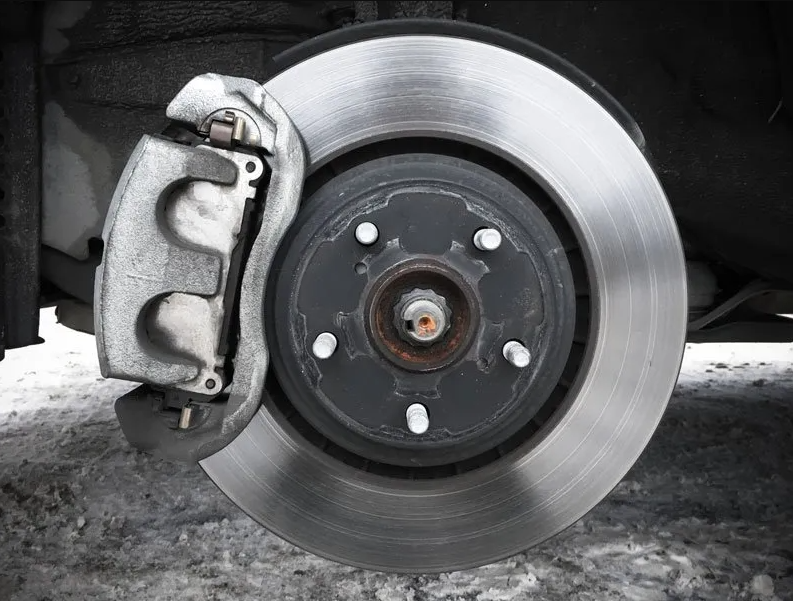Do you have an old used car? Have you thought about what to do with its old parts?
This article will show you how to easily dispose of your old parts without hurting the environment.
I’ll teach you how to reach out to a junkyard, like Junkmate, where scrap metal takes precedence over everything else. They’ll recycle your old parts and help you get rid of them.
Can Brake Rotors be Recycled?
Contents
- 1 Can Brake Rotors be Recycled?
- 2 How to Dispose of Brake Rotors Safely
- 2.1 Search for Junkyards
- 2.2 Find out where and how to dispose of your brake rotors at your local junkyard
- 2.3 Consult a Scrap Metal Collection Company Near You!
- 2.4 Assemble and Transport the Brake Rotors
- 2.5 See whether the brake rotors are worth anything to your local scrap metal collection company.
- 2.6 The Brake Rotors Must Be Placed in the Proper Container
- 3 Can I Reuse Your Rotors?
- 4 Conclusion
Yes, most brake rotors are entirely recyclable, but you can’t simply send them to your local recycle center.
In fact, recycling them can be dangerous. They are made of iron, so if a brake rotor ends up in a landfill, it can contaminate the soil.
Recycling your damaged rotors can also save you money, since you will likely be charged less for new ones than if you purchased them new.
You will have to personally transport them to the company’s facility for recycling.
Due to the fact that most rotors are made out of cast iron, transportation can be difficult, and so you need to ensure that you take the right measures to avoid damage to rotors when transporting them.
Rotors, unlike other automotive components such as batteries, tires, and alternators, are not particularly toxic.
They may contain small amounts of heavy metals like nickel and cobalt, but they contain no dangerous chemicals that can hurt the environment.
The weight and size of the rotors, rather than their toxicity, should be evaluated to determine whether or not they will be recycled.
Remember that rotors may harm the machines that filter through home recycling, so think twice before putting them in your recycling bin.
How to Dispose of Brake Rotors Safely
Search for Junkyards
Brake rotors should be recycled at scrap metal collecting organizations or junkyards.
The metals in the brake rotors will likely be recycled for other uses by these entities. On the internet, you may look for agencies via local government websites.
Additionally, local town hall may be able to provide you with information about these organizations.
These businesses will most likely recycle the brake rotors at no charge. However, you may have to pay for the disposal fees associated with removing the rotors from your car.
You may hunt for agencies online, view local listings, and contact these organizations to gather more information about where they take the brake rotors.
Furthermore, your local town hall may operate a recycling drop-off site, so you may drop your rotors off without driving all the way to a recycling center.
Another option is to drop off your rotors at your local Ace hardware store. Ace will take them and recycle them responsibly.
Find out where and how to dispose of your brake rotors at your local junkyard
Inquire with a junkyard or a local scrap metal collecting organization beforehand to find out how much they’ll pay for the rotors.
Most scrap metal collecting organizations are more than happy to accept car parts as long as they are in proper working condition.
If they agree, arrange for them to pick up the rotors for free.
Make sure that they are in good enough condition to give to scrap metal organizations. Check with the scrap metal organizations to see whether they accept used brake rotors.
If not, place them with your curbside recycling materials.
Consult a Scrap Metal Collection Company Near You!
Brake rotors are considered scrap after they fail due to damage or if they are more than 5 years old.
The local scrap metal collecting organization or junkyard will take the brake rotors and recycle them.
As a result, you must select a scrap metal collection company that is reputable and licensed.
You may even locate one at your neighborhood junkyard.
Using the information you gathered from this online source, call the company or text them and ask if they collect scrap metal.
They can give you a quote over the phone or send a representative over to your home to pick up the brake rotors. They may want you to take some material with them as payment.
Brake rotors may pose a health risk to your dog. Heavy brake rotors can take their toll on your dog’s health and well-being over time.
Assemble and Transport the Brake Rotors
Cast iron brake rotors are excellent for making your car more efficient.
As a result, they will most likely end up in a landfill.
Remember to keep safety in mind at all times when doing dangerous work.
When transporting the brake rotor, make sure to wrap the cardboard box in foil or plastic wrap.
The enclosure will protect your car’s paint from moisture and corrosion.
Consider utilizing a second cardboard container with a waterproof inner lining to keep your rotors safe.
You won’t have to worry about the brake rotors getting damaged.
If you can’t locate some, just wash them with soap and water first. The last thing you want to do is leave them out in the sun.
When handling brake rotors, you’ll generally experience fewer injuries than when handling other types of car parts.
At the same time, while carrying the rotor, make sure it won’t bump into anything and isn’t moving around.
If you’re not cautious, it can create a sticky mess.
To lessen your environmental effect, reuse the cardboard box for packing other brake parts.
If you don’t think the rotors have enough space in the box, leave them under the car somewhere.
See whether the brake rotors are worth anything to your local scrap metal collection company.
As a result, you would be better off trading in larger scrap metal items.
You’ll get a few additional bucks if you drop off your brake rotors at the junkyard for recycling.
When you go to the junkyard with your brake rotors, make sure that you don’t mix them up with scrap metal that the junkyard doesn’t want.
You won’t make a lot at the junkyard, but depending on your location, you could make some decent money.
As a result, you’ll be able to either route yourself or send the item to a recycling center.
However, be sure to check with the junkyard to know for sure.
Small chunks of metal, such as brake rotors, are usually worth around $5.
The Brake Rotors Must Be Placed in the Proper Container
Hand over the brake rotors once you’ve finished unloading your vehicle.
You’ll very certainly have to ask a mechanic for help in ridding your vehicle of the rotors since they’re pretty large.
Once your mechanic is given the brake rotors, he will put them in a caboose or a container in the junkyard. It’s best that you let the mechanic know this before bringing your vehicle in.
If that’s the case, be sure and ask the junkyard’s agent where the rotors should be sent.
You risk damaging the junkyard’s sorting machinery by placing it in the wrong bin.
One way to avoid this is to ask the agent to put a label on the container, stating: “Brake rotors.” If the agent puts a label on the container, then you’re sure that the rotors will be placed in the right bin.
Can I Reuse Your Rotors?
Resurfacing brake rotors one or two times before replacement may seem like a great deal on the surface.
The issue is that brake rotors are becoming thinner over time. In some cases, the thickness can decrease from 1.5 inches to less than 1.0 inch, which is triggering improper stopping and braking.
Even a single resurfacing may lower the lifespan of a rotor by 50%.
A rotor’s permissible limit is etched onto the rotor’s side.
It may not seem that anything is wrong with your rotors, but they will be nowhere near legal thickness.
Your technician will use a brake rotor micrometer to audit the rotor’s thickness. If it exceeds the legal limit of 0.5mm, your technician will have to replace the rotor.
On a practical basis, the labor cost could be more like $150, or up to $200, depending on the mechanic’s skill level.
After resurfacing rotors, it is permissible to reuse them for up to six months. After that, the rotors must be replaced with new ones.
The rotor resurfacing process does have the potential to return the rotor in like-new condition.
Labor costs roughly $100 per hour on average. Therefore, you should be prepared for a monetary investment.
Conclusion
Yes, your old brake rotors can be recycled! When you recycle them, you reduce the pollution and energy consumption that goes into creating fresh ones.
They are non-toxic, yet landfills still contain them, causing health problems for their residents.
The key to our continuing existence is harmony with our environment.
One aluminum can be recycled with three times the energy used to create it. Recycling aluminum saves 80 percent of the energy it would otherwise require.
Consider how much heavier your brake rotor would be if you recycled it.
For every sort of material, many different uses can be found for it.
We all have a role to play in this global effort.





